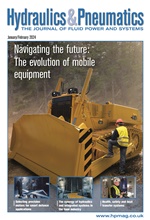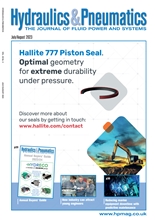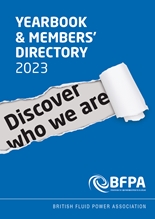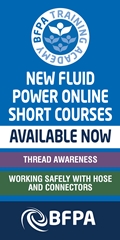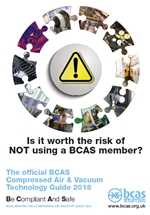Solenoid valves protect tank pressures in critical aerospace

In the aerospace and aviation industries pneumatic systems are typically used to control the flows of fuel and other essential fluids for; propulsion, thrust, lubrication, isolation, purge and other fluid control applications. These pneumatic systems are usually supplied by a tank of compressed gas and one of the main challenges of this design is to eliminate the possibility of any leakage (or excess flow) from the tank. Should this occur it’s likely the issues would be either shorter system life, or the need to specify a larger tank. In these situations, a solenoid valve which offers the key benefits of zero leakage along with a wide operating pressure range, can be an effective ‘barrier’ between the tank and the system. However, engineers will also have to consider other factors which will have a direct impact on the performance of the solenoid valve. For example, various combinations of operating temperatures, material compatibility, power limitations and expected life cycle all addup to the complexity of system requirements.
An effective solution Precision micro-hydraulic specialists, The Lee Company, says that its solenoid valves, which it highlights are the smallest on the market, have proven themselves with decades of use in demanding aerospace applications, along with other applications involving harsh conditions ranging from high temperatures and pressures of deep subsea oil wells to the cold and vacuum of outer space.
A good example of this is the ongoing development of its zero-leak pneumatic solenoid valve, which the company says has proven to be an ideal ‘barrier’ for aerospace pneumatic systems. It features a polyimide shaft tip which ensures a bubble tight seal on nitrogen in a package weighing only 2.24 ounces and has a direct acting design which operates without pressure assistance and flows up to 30 SLPM of air at 200 psi differential.
Ultra-compact and energy efficient, the 70-ohm solenoid coil requires less than 4 watts to open the valve and for more demanding applications custom configurations are available with 6000 psid operating capability or qualified for over 1 million cycles.
Potential applications
The valve configuration was initially developed to meet the difficult requirements associated with barrier valves used in space systems, where typically the valve controls flow from a tank upstream of a satellites propulsion system. They are also used in launch vehicles as piloting valves for isolating the pneumatics, whether it’s for fuel, oxidizer, or helium purge systems as well as being used for controlling thrust vector actuators. Aircraft systems also require barrier valves with deployment on tanks of compressed gas, landing gear or braking systems which can utilise pneumatic back-up systems. Lee’s zero leak pneumatic solenoid valves are just one example of its range of powerful industry specific products for a wide range of applications.
https://www.theleeco.com/uk/industrysolutions/aerospace-defence/
https://www.linkedin.com/company/the-lee-company/
-
Smart Manufacturing & Engineering Week
05 - 06 June, 2024
NEC, Birmingham -
HILLHEAD 2024
25 June, 2024, 9:00 - 27 June, 2024, 16:00
Hillhead Quarry, Buxton, Derbyshire UK




